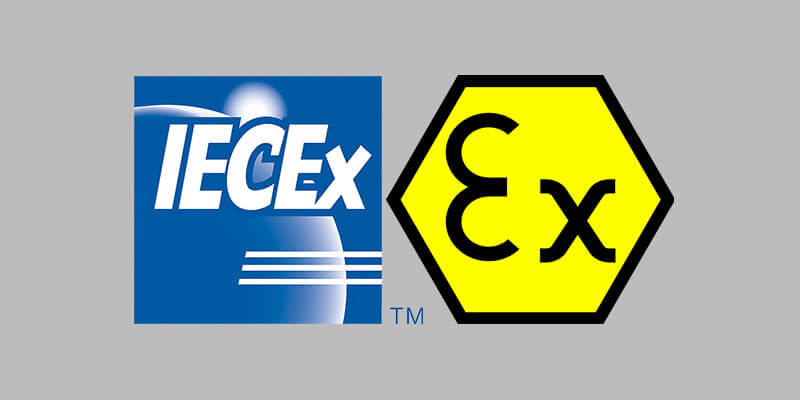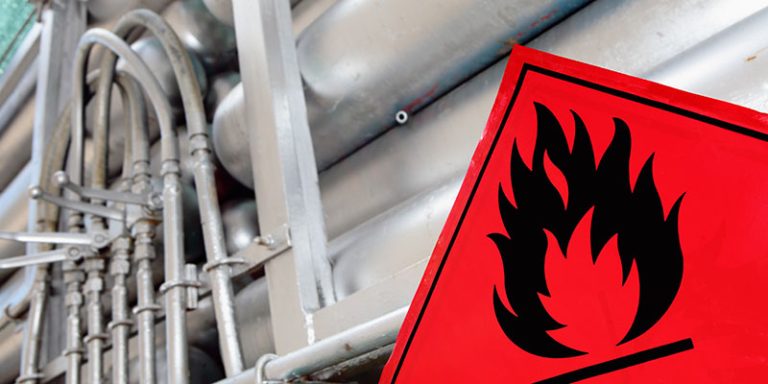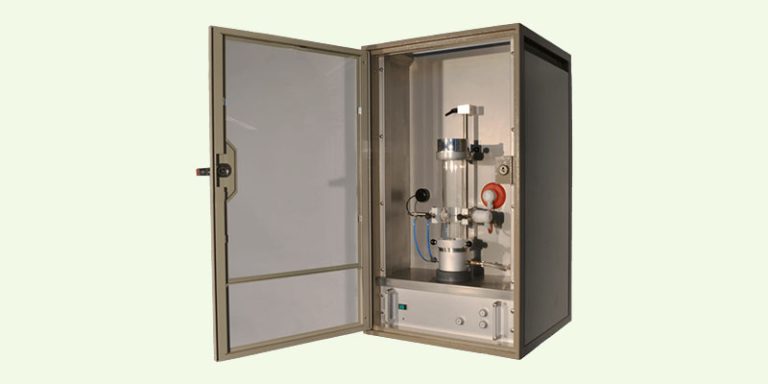The ATEX and IECEx are two international certification schemes that aim to ensure the safety of equipment used in explosive atmospheres. ATEX is a mandatory certification system limited to Europe, while IECEx is an international certification accepted in several countries. The two systems are not interchangeable, and manufacturers need to choose the certification scheme that best suits their needs.
ATEX is based on the European Union’s Directive 2014/34/EU, which sets out the requirements for equipment and protective systems intended for use in potentially explosive atmospheres. The directive applies to equipment and protective systems intended for use in all sectors of industry, from mining and petrochemicals to food processing and cosmetics. On the other hand, IECEx is based on international standards developed by the International Electrotechnical Commission (IEC). The IECEx system provides international recognition to manufacturers who have had their equipment and services assessed and certified by accredited certification bodies.
ATEX and IECEx: What’s the Difference?
Overview of ATEX and IECEx
ATEX and IECEx are two international certification schemes that deal with equipment intended for use in potentially explosive environments. While ATEX is a mandatory requirement in Europe, IECEx is a voluntary scheme that is accepted globally. The main difference between the two is the geographical location where the certification is accepted and recognised.
ATEX stands for “Atmosphères Explosibles” and refers to two European Union directives: Directive 1999/92/EC (also known as ATEX 137) and Directive 2014/34/EU (ATEX 114). These directives define the minimum health and safety requirements for the protection of workers in potentially explosive atmospheres.
IECEx, on the other hand, stands for “International Electrotechnical Commission System for Certification to Standards Relating to Equipment for Use in Explosive Atmospheres”. It is an international certification system that is based on IEC International Standards and is designed to facilitate international trade in Ex equipment and services.
Standards and Assessment
Both ATEX and IECEx are based on international standards for Ex equipment. ATEX is based on the European EN series of standards, while IECEx is based on the IEC 60079 series of standards. These standards define the requirements for the design, construction, testing, and assessment of Ex equipment.
In terms of assessment, ATEX requires manufacturers to have their Ex equipment assessed by a Notified Body, which is a third-party organisation designated by a Member State of the European Union. IECEx, on the other hand, allows manufacturers to have their Ex equipment assessed by an IECEx Certification Body, which is a third-party organisation that has been accredited by the IECEx.
Ex Certification
Both ATEX and IECEx provide certification for Ex equipment. ATEX provides two levels of certification: the EC Type Examination Certificate and the EU Declaration of Conformity. The EC Type Examination Certificate is issued by a Notified Body and certifies that the Ex equipment meets the requirements of the ATEX Directive. The EU Declaration of Conformity is issued by the manufacturer and certifies that the Ex equipment meets the requirements of the ATEX Directive.
IECEx provides a Certificate of Conformity, which certifies that the Ex equipment meets the requirements of the IEC International Standards. The Certificate of Conformity is issued by an IECEx Certification Body.
Certification Bodies, Equipment, and Services
ATEX and IECEx have different certification bodies. ATEX has Notified Bodies, which are designated by Member States of the European Union. IECEx has IECEx Certification Bodies, which are accredited by the IECEx. Both ATEX and IECEx have a list of approved certification bodies that can be found on their respective websites.
In terms of equipment and services, ATEX and IECEx cover a wide range of Ex equipment, including electrical and non-electrical equipment. They also cover services such as installation, maintenance, and repair of Ex equipment.
Costs and Time to Market
The costs and time to market for ATEX and IECEx certification vary depending on the type of Ex equipment and the certification requirements. Generally, IECEx certification is more expensive and takes longer than ATEX certification due to the global recognition and the additional requirements of the IECEx scheme.
Coordination and Evaluation
ATEX and IECEx both require coordination and evaluation of Ex equipment. ATEX requires manufacturers to evaluate the risks associated with the use of Ex equipment and to ensure that the equipment is marked with the appropriate Ex marking. IECEx requires manufacturers to demonstrate their competence in Ex equipment and to ensure that the equipment is marked with the IECEx marking.
Transparency and International Recognition
Both ATEX and IECEx provide transparency and international recognition for Ex equipment. ATEX requires manufacturers to provide information about their Ex equipment to the relevant authorities and to make the information publicly available. IECEx provides an online location where manufacturers can find information about approved Ex equipment and services.
Overall, ATEX and IECEx have similar requirements for Ex equipment, but differ in terms of geographical recognition and certification bodies. Manufacturers should evaluate their needs and requirements before choosing between the two schemes.
ATEX Certification
Overview of ATEX Certification
ATEX (Atmosphères Explosibles) is a European Union directive that regulates the manufacture, installation, and use of equipment in potentially explosive atmospheres. The ATEX directive is designed to protect workers from the risks of explosions in the workplace.
ATEX certification is a process that assesses equipment and services to ensure they meet the requirements of the ATEX directive. ATEX certification provides confidence that equipment is safe to use in explosive atmospheres and meets the health and safety requirements of the directive.
ATEX Directive
The ATEX directive (Directive 2014/34/EU) is a set of regulations that apply to equipment and protective systems intended for use in potentially explosive atmospheres. The directive sets out the requirements for manufacturers and suppliers of equipment to ensure that it is safe for use in such environments.
Equipment and Services
ATEX certification applies to a wide range of equipment and services, including electrical and non-electrical equipment, protective systems, and components. Examples of equipment that require ATEX certification include motors, pumps, fans, and lighting.
Manufacture and Installation
Manufacturers of equipment that is intended for use in potentially explosive atmospheres must ensure that their products meet the requirements of the ATEX directive. This includes designing and manufacturing equipment that is suitable for use in such environments, and providing documentation and instructions for safe installation and use.
Testing and Certification
ATEX certification involves testing and certification of equipment and services by notified bodies. Notified bodies are organizations that have been designated by member states of the European Union to carry out conformity assessment procedures.
Notified Bodies
Notified bodies play an important role in the ATEX certification process. They are responsible for assessing equipment and services to ensure they meet the requirements of the ATEX directive. Notified bodies are independent organizations that have been accredited to carry out conformity assessment procedures.
Certificate of Conformity
A certificate of conformity is issued by the notified body to confirm that the equipment or service meets the requirements of the ATEX directive. The certificate of conformity provides evidence that the equipment or service has been assessed and found to be safe for use in potentially explosive atmospheres.
In summary, ATEX certification is a process that assesses equipment and services to ensure they meet the requirements of the ATEX directive. ATEX certification provides confidence that equipment is safe to use in explosive atmospheres and meets the health and safety requirements of the directive. Manufacturers of equipment that is intended for use in potentially explosive atmospheres must ensure that their products meet the requirements of the ATEX directive. Notified bodies play an important role in the ATEX certification process, and issue a certificate of conformity to confirm that the equipment or service meets the requirements of the directive.
IECEx Certification
Overview of IECEx Certification
IECEx Certification is an international system for the safety of electrical equipment used in hazardous areas. The International Electrotechnical Commission (IEC) developed this certification scheme to ensure that electrical equipment used in explosive atmospheres is safe and meets the required standards. The IECEx Certification system is based on IEC standards and is recognized in many countries worldwide.
IECEx Scheme
The IECEx scheme is a voluntary certification system that provides manufacturers and suppliers with a single certification process for their products. The scheme covers all types of electrical equipment used in hazardous areas, including electrical installations, components, and devices.
Equipment and Services
The IECEx scheme covers a wide range of electrical equipment used in hazardous areas, including:
- Electrical installations
- Components
- Devices
- Services related to the design, manufacture, installation, maintenance, and repair of equipment used in hazardous areas
Manufacture and Installation
Manufacturers and suppliers of electrical equipment must comply with IEC standards to achieve IECEx certification. The IECEx certification process covers the entire lifecycle of the equipment, from design to disposal. The certification process includes:
- Manufacturing and assembly
- Installation and commissioning
- Maintenance and repair
Testing and Certification
IECEx certification involves testing and certification of electrical equipment to ensure that it meets the required standards for use in hazardous areas. The testing and certification process includes:
- Testing of equipment to ensure that it is safe and meets the required standards
- Assessment of the manufacturer’s quality management system
- Inspection of the manufacturing facilities
- Audit of the manufacturer’s quality management system
IECEx Certification Bodies
IECEx certification bodies are independent organizations that are accredited by the IECEx to carry out the certification process. These bodies are responsible for:
- Evaluating and testing electrical equipment
- Assessing the manufacturer’s quality management system
- Inspecting the manufacturing facilities
- Issuing certificates of conformity
Certificate of Conformity
The Certificate of Conformity is issued by the IECEx certification body to the manufacturer of the electrical equipment. This certificate confirms that the equipment has been tested and certified to meet the required standards for use in hazardous areas. The certificate includes information such as the manufacturer’s name, the equipment’s model number, and the IECEx certification number.




